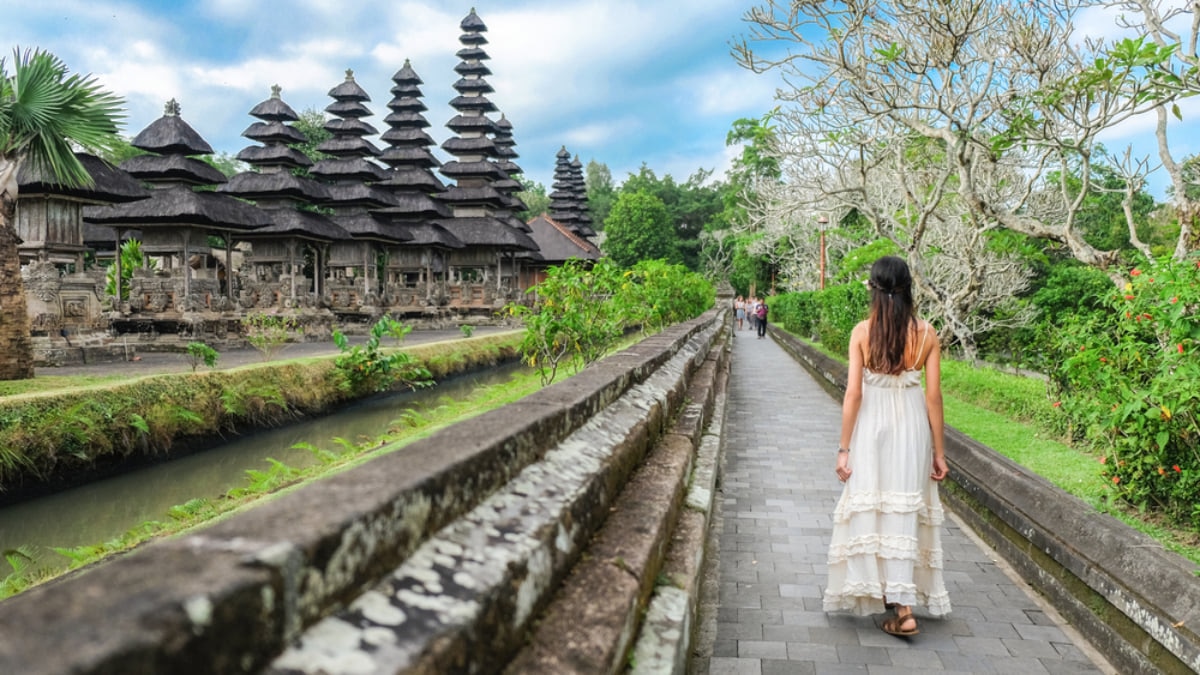Home to over 4,000 unique temples, it's little wonder Bali is often called the 'Island of the Gods'. Most of these temples are associated with Balinese Hinduism, a form of Hinduism which has blended with local beliefs and pantheons, and which is the main religion on the island. While most visit Bali for its tropical climate and sandy beaches, many are surprised by the rich indigenous culture and history which lives on in the island's temples. Discover some of the most beautiful ancient temples in Bali.
table of contents
[x] close
The Most Beautiful Temples and Shrines to Visit in Bali
Pura Besakih

Photo by Galyna Andrushko/Shutterstock
Situated in the foothills of Bali's sacred Mount Agung, surrounded by lush tropical forests and serene rice paddies, the Pura Besakih is the most important religious site on the island. This vast temple complex contains around 40 different temples, and was declared a UNESCO World Heritage Site in 1995. Pura Besakih is an active temple with a devoted following, and visitors to the site are asked to dress modestly or cover up with a sarong (waist cloth) in order to respect the local customs.
Pura Ulun Danu Beratan
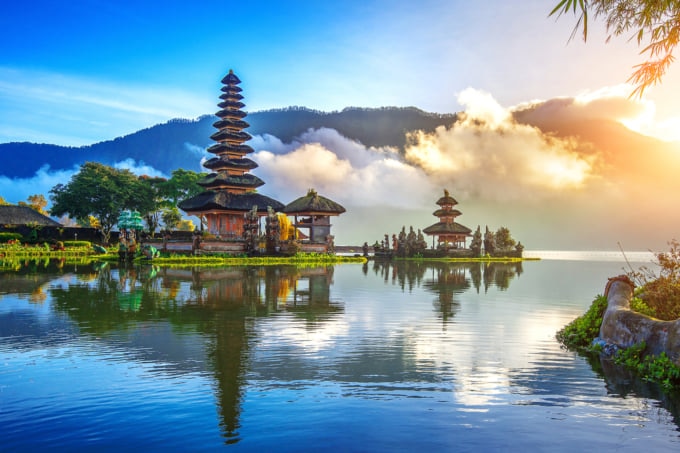
Photo by Guitar photographer/Shutterstock
One of Bali's most-photographed scenes, the Pura Danu Beratan (also spelled Bratan) is a serene temple on Lake Bratan dedicated to the Balinese-Hindu goddess of lakes, rivers and irrigation, Dewi Danu. When the water level of the lake rises, the temple appears to be floating on water, earning it the nickname 'The Floating Temple'. The main tower at Danu Beratan Temple is dedicated to Shiva, the Destroyer, and his consort Parvati. Weather permitting, visitors can tour the lake and view the shrine by boat.
Pura Ulun Dana Batur
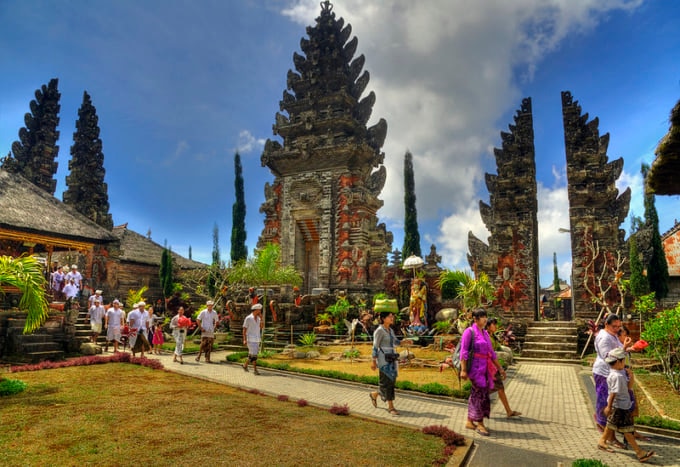
Photo by alex hanoko/Flickr
This sacred temple complex is dedicated to Vishnu, the Hindu god of protection, and the local Balinese water goddess, Dewi Danu. Pura Ulun Dana Batur was founded around 400 years ago, and the temple's premier 11-tiered shrine, dedicated to the deities Shiva and Parvati, survived multiple volcanic eruptions from the nearby Mount Batur. Today the complex contains nine main temples and dozens of shrines dedicated to aspects of traditional Balinese culture, including agriculture, art and handicrafts. Pura Ulun Dana Batur requires a small donation in order to enter the grounds.
Pura Taman Ayun

Photo by Guitar photographer/Shutterstock
Pura Taman Ayun is a temple complex known for its beautiful gardens and traditional Balinese architecture, and is the premier temple in Mengwi. The temple was first built in 1634, and many aspects of the compound intentionally borrow from classical Chinese aesthetics and garden design, from the scenic ponds to the intricately carved reliefs. The name 'Pura Taman Ayun' means 'Temple of Beautiful Gardens', and the title is well-earned, making use of elegant water features, canals and plant life.
Pura Luhur Batukaru
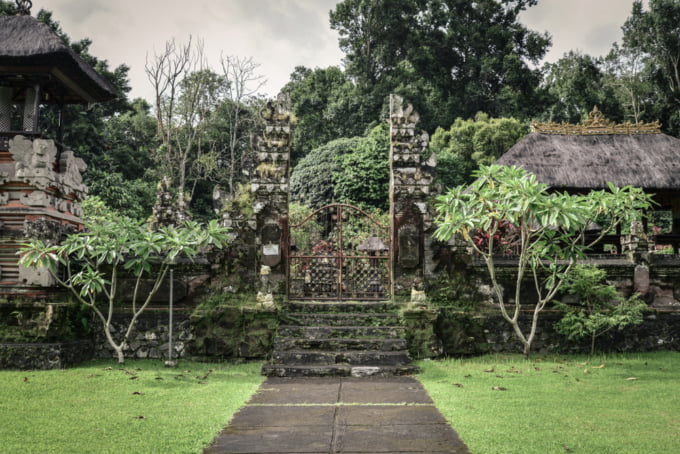
Photo by mama_mia/Shutterstock
Pura Luhur Batukaru is an ancient Hindu temple complex surrounded by the lush, forested slopes of Gunung Batukaru, a sacred mountain at the heart of the island. The most important shrine within this temple is a seven-tiered tower dedicated to Mahadewa, the deity of the nearby mountain. Pura Luhur Batukaru is still very important to the local Balinese, who use its sacred waters for ceremonies and visit during festivals to offer donations, thanks, and to pay their respects.
Pura Goa Lawah (Bat Cave Temple)
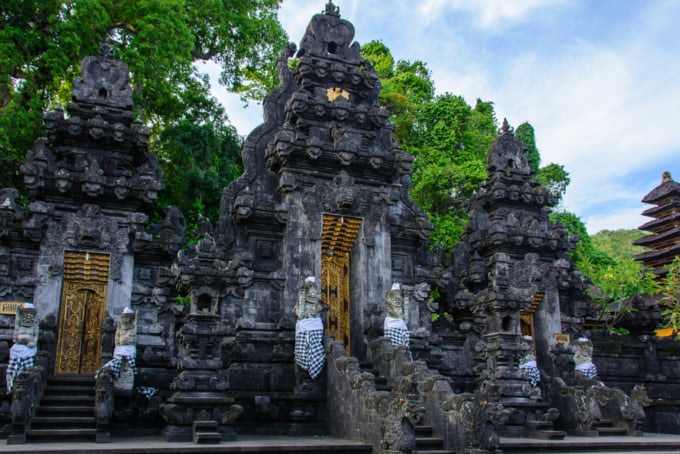
Photo by Maks Ershov/Shutterstock
The inner sanctum of Pura Goa Lawah, meaning 'Bat Cave Temple', is built at the entrance to a cave and home to a large colony of bats, which is how it got its name. Situated on the coast near Penida Island, Pura Goa Lawah is one of the nine directional temples believed to protect the island from misfortune. The main shrine here is dedicated to Shiva, and motifs of golden bats and Naga Basuki, the mythical dragon believed to maintain the balance of the universe, adorn the complex.
Pura Taman Saraswati
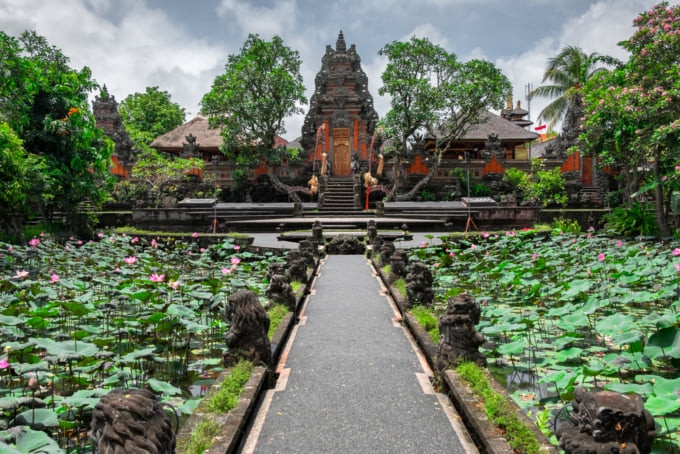
Photo by Ivan Kurmyshov/Shutterstock
Pura Taman Saraswati is also known as the Ubud Water Palace, or simply 'Saraswati Temple'. This elegant Balinese temple is dedicated to Saraswati, the goddess of knowledge, literature and art. The temple is best known for its picturesque lotus ponds and water gardens which surround the compound. Inside the temples complex, intricate carvings and statues decorate the various shrines dedicated to sacred Balinese and Hindu deities. Saraswati Temple is located in the heart of Ubud and is a symbol of the town.
Pura Tirta Empul

Photo by MarkViktor/Shutterstock
Tirta Empul, meaning 'holy water spring', is a sacred water temple founded on a natural water spring and the source of the Pakerisan River. The temple is known for its bathing pool adorned with stone carvings of elephants, flowers and dragons, which is used by the locals for purification ceremonies. A number of tourists are also allowed to take part in the bathing ritual, and there is often a line to get in. The main shrine at Pura Tirta Empul is dedicated to Vishnu, one of the premier Hindu deities.
Pura Tanah Lot
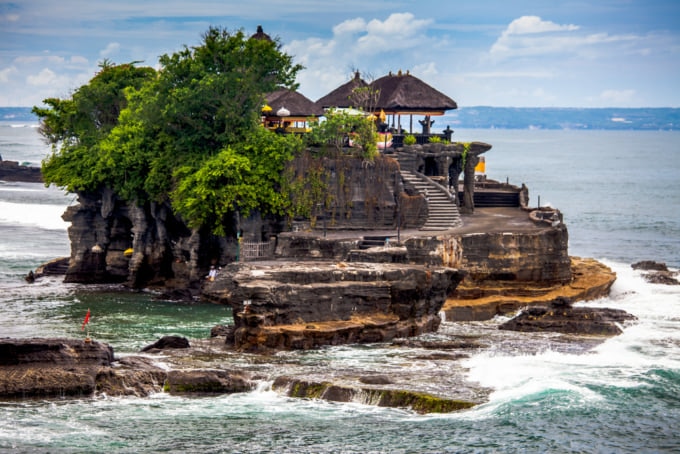
Photo by Pigprox/Shutterstock
Situated on a rocky outcrop on the southwest coast of the island, Pura Tanah Lot is one of the nine directional temples of Bali responsible for protecting the island. At high tide, the entire island is surrounded by water, while the receding tide reveals a rocky stairway visitors can use to approach the temple. This small, scenic temple is devoted to Dewa Baruna, the Balinese god of the sea, and is one of the island's most iconic landmarks. Despite its small size and dangerous location, Pura Tanah Lot is a very popular destination for tourists.
In Conclusion
Bali is an island in Indonesia with a history and culture separate and distinct from the rest of the country. The country is home to beautiful ancient temples and a fascinating indigenous culture that is a delight to discover. Explore Bali's best temples and shrines and learn about the traditions, beliefs and customs that shape them.





